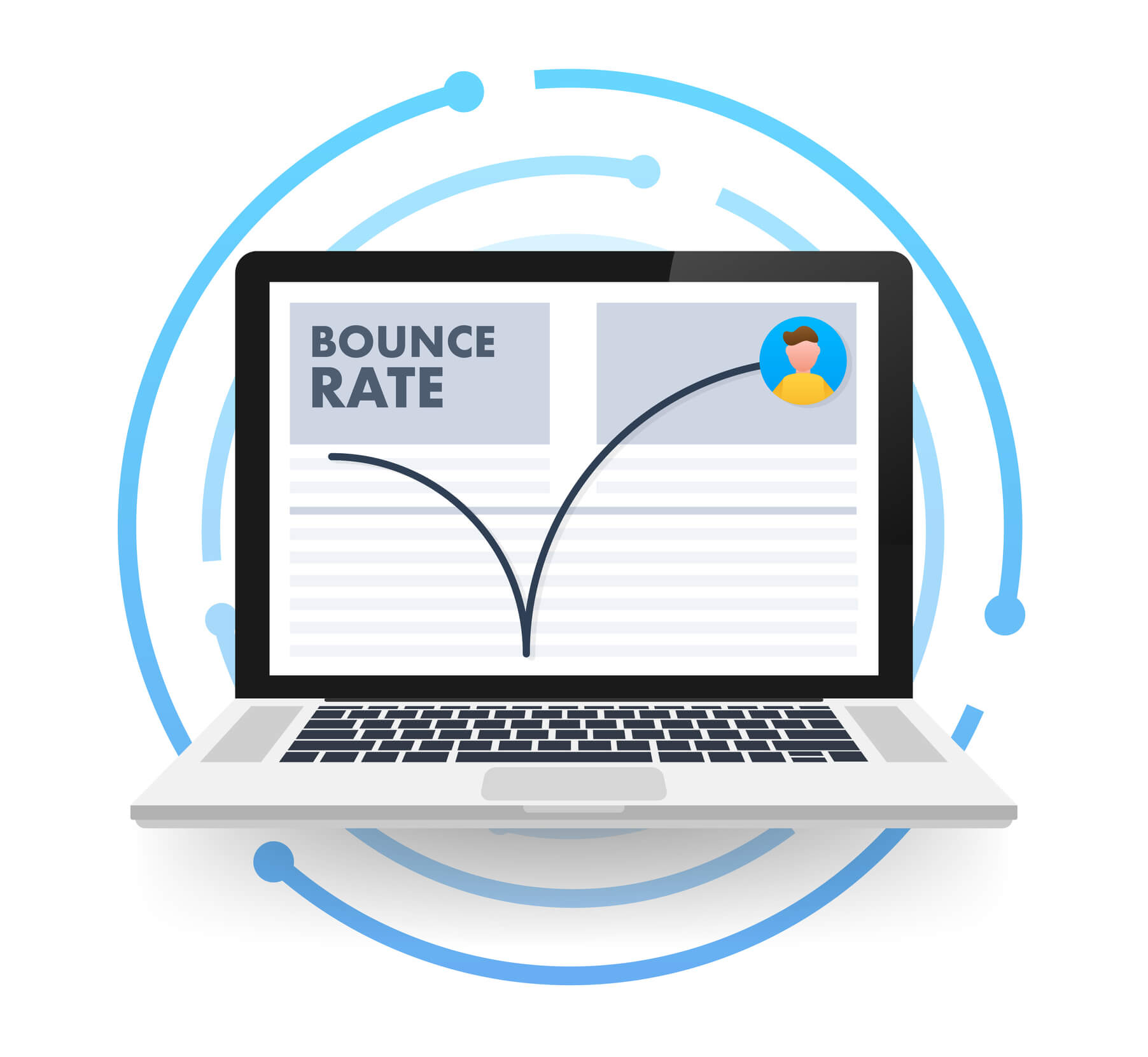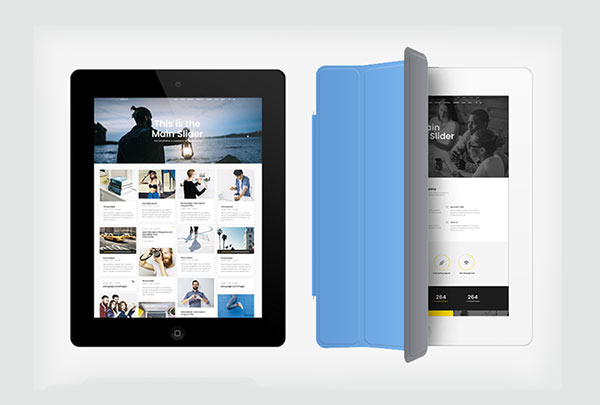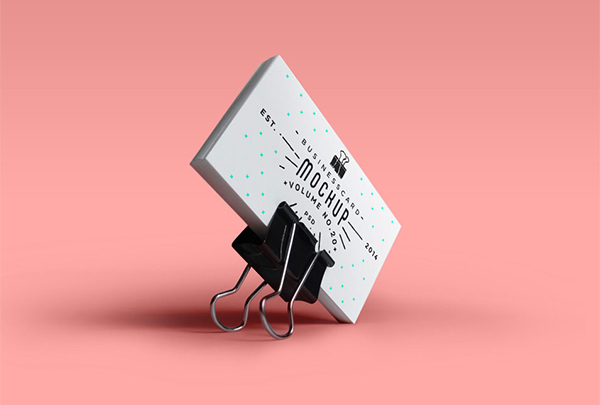
What is Bounce Rate? How to Improve Your Bounce Rate
Summary
Out of all the metrics on Google Analytics, bounce rate can often be misunderstood. Learn what it is and what you can do to improve it.
Out of all the metrics on Google Analytics, bounce rate can often be misunderstood. To provide some clarity on this metric, first we will define it. According to Google Support, bounce rate is “the percentage of all sessions on your site in which users viewed only a single page and triggered only a single request to the Analytics server,” and a bounce as “a single-page session on your site.” In other words, when someone visits your site, and they do not take some form of action or click on to another page, that is a bounce. Therefore, the bounce rate is calculated be dividing the number of single page visits by total visits.
So, what does bounce rate measure? Bounce rate is considered a measure of “stickiness” of a site, or the amount of time someone stays on a site and engages with it over a given period. It is a good indicator of how engaging a web page is and how relevant the content on a site is to the visitors that it is attracting. The lower the bounce rate, the more engaging the site, and the more likely that visitors will view more pages and stay on the site longer.
What is a Good Bounce Rate?
You may be asking what is considered a good bounce rate? It depends on what type of business you have. On average, the bounce rate for the majority of websites falls somewhere between 26% and 70%. However, bounce rate varies widely according to industry, traffic source, and other factors. On a general level, a bounce rate of 26% to 40% is considered excellent, 41% to 55% is average, 56% to 70% is higher than average, but may not be a cause for concern depending on the site, and 70% and above is poor, with 90% and higher being extremely poor.
With all this said, there are different average bounce rates for various website types:
- Ecommerce and retail websites: 20% to 45%
- B2B websites: 25% to 55%
- Lead generation websites: 30% to 55%
- Non-ecommerce content websites: 35% to 60%
- Landing pages: 60% to 90%
- Dictionaries, portals, and blogs: 65% to 90%
It is important to consider these variances and compare your bounce rate to both industry averages and your own competitors, when considering success with this metric.
Is a High Bounce Rate Always Negative?
A bounce rate that is high is not always a great metric for sites that may not require multiple pages to be viewed for the visitor to get all the information they need. For example, if a site visitor is looking for the definition of a word on a dictionary site, they would not need to visit any additional pages of the site, but they still would have gotten the information they needed. Similarly, for a news or blog site, the person visiting the site may only be interested in reading the article they initially clicked to, rather than browsing more pages of the site. In these situations, bounce rate may not be a great metric that measures site engagement, because even though these pages may have a high bounce rate, they could be considered successful in capturing the attention of site visitors.
Why Do People Bounce?
There are many reasons people may bounce from a page. To begin with, they may have found what they were looking for on the first page they visited, as discussed above. If a visitor was looking for the answer to a specific question, or found the information they needed, they may not need to click on to another page of the site. In this situation, the bounce is not bad.
One reason could be that the page may just not meet the expectations of the visitor of the site. If they originally searched for something and are led to a page that is not related to their original search intent, there is a good chance they will leave the page.
Another common reason is lack of visual appeal and poor UX. It is very important to have a site that not only looks good, but is also easy to use. Often, visitors may not like how a site looks or may have difficulty using it because of bad site design and will choose to exit the site rather than browse a poorly made website.
Additionally, a lack of call to action can hurt your bounce rate. Without a clear and well designed call to action, users may miss the important next step that will lead to conversions for your business. Quality call to action banners can make a world of difference when it comes to improving bounce rate, engagement, and overall conversions.
How Important is Bounce Rate?
Bounce rate is an important metric because it measures how engaging your content is. It can indicate that visitors are unable to find what they are looking for on your site, or that your content or user experience needs to be improved. In other words, it is a good way to measure the quality of site content and usability.
It can be especially useful to compare different pages to one another and determine what engages your audiences versus what does not. It is possible to distinguish what topics an audience may like or dislike or what content is more compelling than others.
Is Bounce Rate a Ranking Factor?
According to this informative blog, “bounce rate is not a ranking factor because Google can’t draw universal conclusions about low or high bounce rates. It’s just too noisy of a signal for algorithms to use. That information is for your benefit only— because you, the human, are the only one who can give it subjective context.”
It is important to note that bounce rate does not directly affect organic rankings, but it does indirectly affect other ranking factors that Google puts weight on, such as slow page speed, low-quality design, poor mobile optimization, and more. Though it may not be a ranking factor, it is a good indicator of engagement and quality of user experience.
Ways to Improve Bounce Rate
There are several ways to improve bounce rate, and the majority center around providing site visitors with great user experience. Some of the best ways to do this include:
- Align the page content with search intent
- Make the page purpose clear and highlight important details immediately
- Create high quality content that is engaging and encourages users to interact with your site for longer periods of time
- Design the site in a way that is clear and easy to read
- Stay away from things that disrupt user experience
- Ensure page speed is at a good level
- Utilize attention capturing call to actions
Overall, bounce rate is an important metric to consider when measuring the engagement of your site. It is essential to take steps to improve it in order to encourage longer engagement times, drive conversions, and propel growth for your business.




